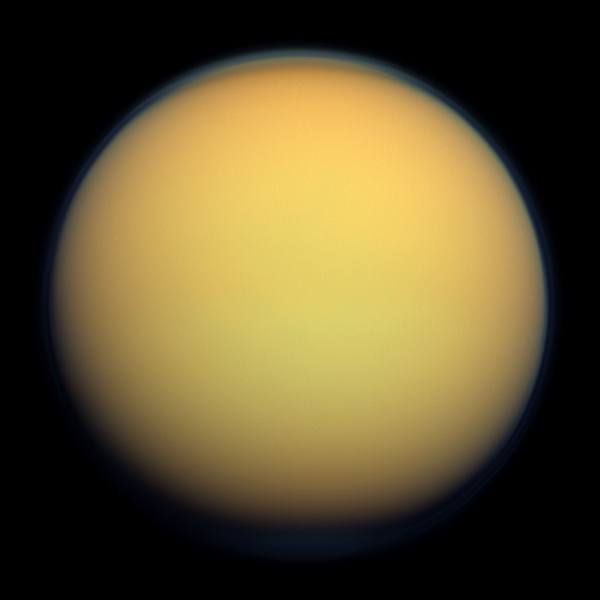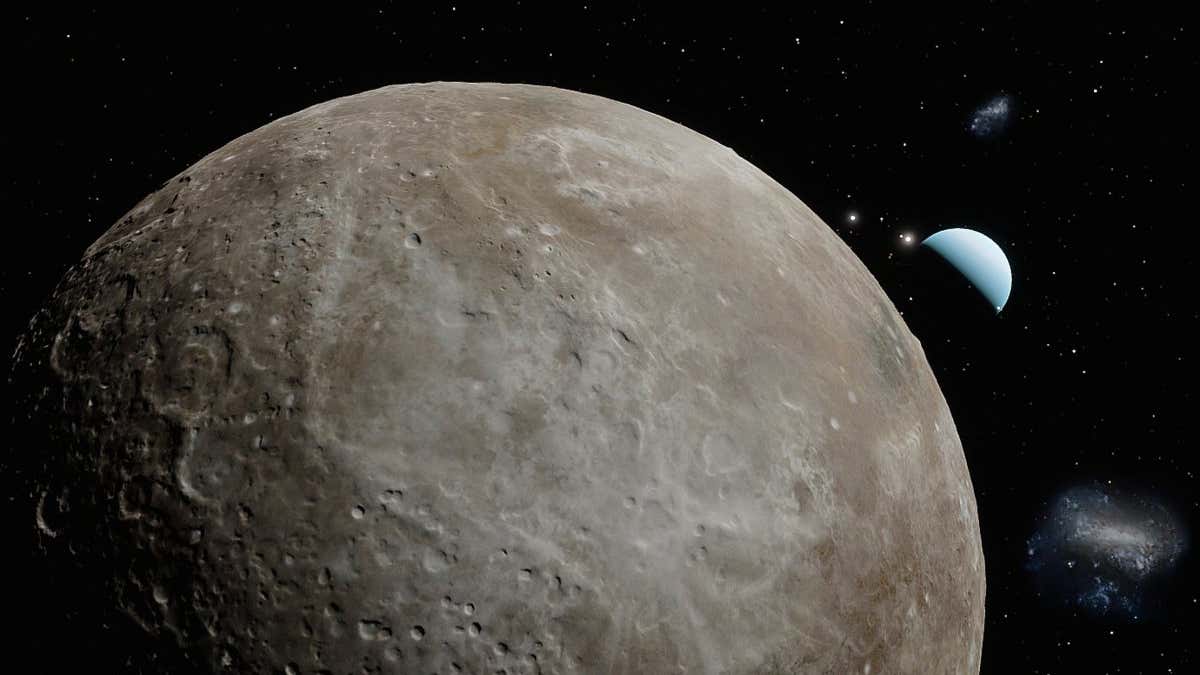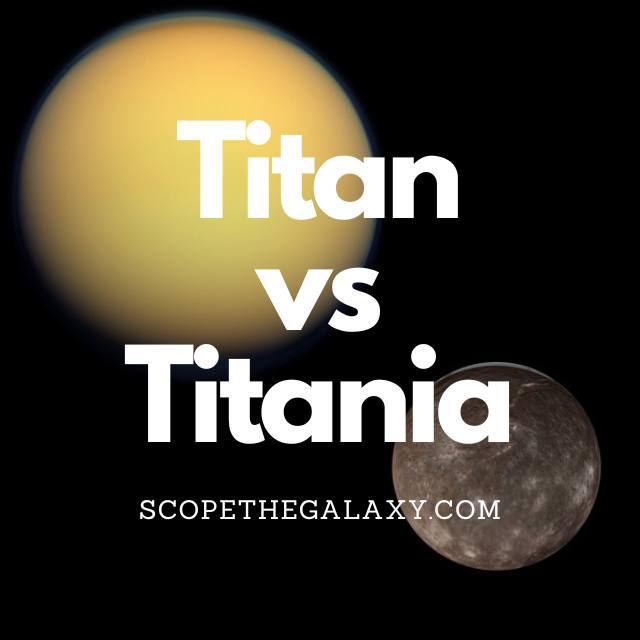*This post may contain affiliate links. This means we may make a commission if you purchase an item using one of our links*
The main differences between Titan and Titania are that Titan is the 2nd biggest moon with a diameter of 5,150km compared to Titania which is the 7th largest with a diameter of 1,576.8km, Titan orbits Saturn while Titania orbits Uranus and Titan has an atmosphere 1.19 times thicker than Earth’s whereas Titania’s atmosphere is extremely thin.
There are numerous other differences between these two so, continue reading if you want a more thorough breakdown of Titan and Titania along with their similarities and differences below.
What Is The Moon Titan?
Table of Contents

Titan is Saturn’s largest moon and the second biggest moon in the entire solar system, with a diameter of 5,150km. This would make it even larger than the planet Mercury which is only 4,879km, and significantly larger than Pluto also.
As a result, Titan’s gravitational strength stands at around 1.352 m/s²
It is the only natural satellite in our solar system that is composed similarly to Earth, where it has a thick atmosphere (1.19 times that of Earth) made primarily of nitrogen (95%) along with smaller amounts of methane (5%).
It has rivers and lakes on its surface along with a water cycle very similar to that of Earth, where essentially water evaporates and eventually lands on the satellites surface.
Therefore, much like Earth, Titan has a terrestrial based body but, there is a difference in their atmospheric pressure. The pressure on Titan’s surface is around 60% greater than that of Earth’s surface but, it isn’t nearly as dense.
Nevertheless, it is still far denser than most other bodies at 1.88 g/cm³. As a result, Titan’s mass is 1.345×10^23 kg.
In regards to its temperature, Titan is on the colder side where it averages around -179 degrees Celsius whilst its core’s temperature is actualluy very cold in comparison to other entities falling between 226 – 526 degrees Celsius.
As Saturn is the 6th farthest planet from the Sun, it will take Titan roughly the same amount of time to orbit the Sun, which would fall around 29.4 years.
It takes Titan 15 days and 22 hours to orbit Saturn. A day is 15 days and 22 hours also as it is tidally locked to the gas giant.
What Is The Moon Titania?

Titania is the biggest of Uranus’s moons, with a circumference of 4,956km and a diameter of 1576.8km.
The high density of this moon suggests that it most likely formed from a collection of dust and debris leftover from the formation of Uranus or from the debris created in the collision that reportedly tilted Uranus onto its side. As a result Titania has a mass of 3.4 × 10^21 kg.
First discovered on 11th January 1787 (the same day as the discovery of Oberon, the second biggest moon of Uranus) by British astronomer William Herschel, the name “Titania” comes from the Shakespeare play, A Midsummer Night’s Dream. (Most of Uranus’ moons are named after Shakespeare’s characters.)
Having observed Titania for many years, scientists theorize that its composition is likely to be equal parts ice and rock, the latter of which may contain carbonaceous materials and organic compounds.
Research suggests that the moon most likely has a rocky core (accounting for 66% of the moon’s radius) and an icy mantle. If the mantle contains ammonia, it will act as antifreeze and make it possible for liquid water to exist. In this instance, the moon could possess a layer of liquid ocean around 50km thick.
Titania tilts slightly towards the equator of Uranus and is tidally locked to its planet. This means a Titania day is 8 days and 17 hours which would be the same for its orbital cycle. Titania has an average temperature of -203 degrees Celsius.
The planet Uranus is also tilted, with the moons orbiting on the equatorial plane, giving it extreme seasons. On Titania, the north and south poles experience 42 years of complete sunshine followed by 42 years of total darkness.
Scientists have observed the presence of large amounts of carbon dioxide, suggesting this may be the primary component of this moon’s atmosphere. Thanks to the tilted orbit, and a concentration of solar radiation from the poles, Titania probably maintains a carbon dioxide cycle, similar to the hydrogen cycle on Earth.
Similarities Between Titan And Titania
In regards to the similarties between Titan and Titania, they are as such:
- Both have a hotter central core.
- Both have a rocky, terrestrial surface.
- Both are spherical in shape.
- Neither have rings surrounding them.
- Both are tidally locked to their planet.
- Both orbit their planet in an elliptical pattern.
- Neither have a magnetic field.
- Neither have tectonic plates.
Differences Between Titan And Titania
In regards to the differences between the two, they include the below:
- Titan is the bigger of the two with a diameter of 5,150km whilst Titania has a diameter of 1,576.8km .
- Titania orbits Uranus whilst Titan orbits Saturn.
- Titania has a very thin exosphere composed mostly of carbon dioxide whilst Titan’s atmosphere is 1.19 times as thick as Earth’s and is composed of nitrogen and smaller amounts of methane also.
- Titan has a water cycle similar to that of Earth whilst Titania does not have a water cycle.
- A day on Titania takes 8 days 17 hours whilst a Titan day is 15 days and 22 hours.
- It takes Titania 8 days 17 hours to orbit Uranus whilst Titan orbits Saturn in 15 days and 22 hours.
- Titan orbits Saturn at an average distance of 1.2 million km whilst Titania is 435,840km from Uranus.
- Titan’s axial tilt is 27 degrees whilst Titania’s axial tilt is close to 0.
- Titania’s average temperature is around -203 degrees Celsius whilst Titan’s average temperature is -179 degrees Celsius.
- Titan’s density is 1.88 g/cm³ whilst Titania’s density is 1.71 g/cm³.
- Titan’s mass is 1.345 × 10^23 kg whilst Titania’s mass is 3.4 × 10^21 kg.
- Titania’s gravitational strength is 0.367 m/s² whilst Titan’s is 1.352 m/s².
Summary
Titan and Titania may both be amongst the 10 largest moons, are one of many natural satellites that orbit their respective gas giant planets and are also tidally locked to their planets but, they differ in numerous ways too.
Whether it be in regards to mass, size, their water cycles, gravitational strength, how dense each body is and more. Therefore, despite the fact both are spherical and rock based celestial bodies, they have many distinct features that easily distinguish the two from one another.

